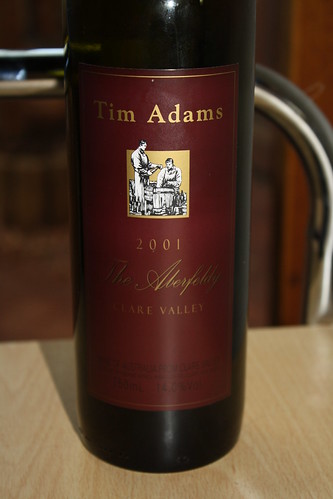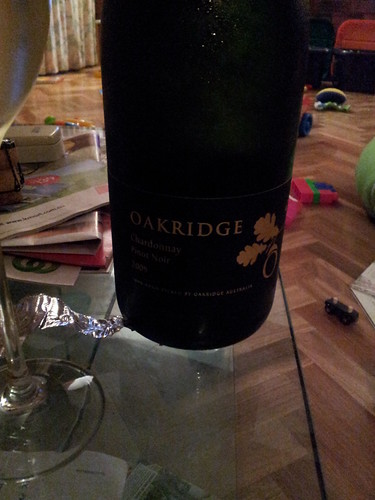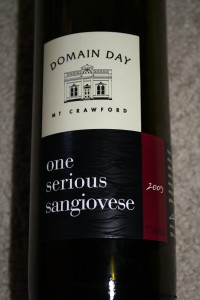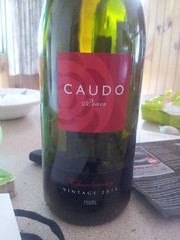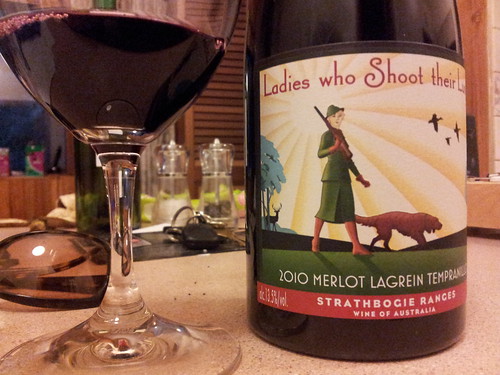Another wine from the cellar and I didn’t date the tasting note but it was a while ago. This is a Clare Valley Shiraz from the very well known (in South Australia, at least) Tim Adams stable.
The grapes come from the eponymous vineyard, first planted by the Birks (of Wendouree) in 1904. And some of this old stock remains – now well over 100 years old, but in 2001 the vineyard was just approaching its centenary.
This is not their cheap, every day quaffer and the winemaking notes (thankfully still available on the website) reflect that. Basket press, plenty of time on skins, and a year on both new and one year old American oak.
I can’t remember how much I paid for this bottle, but I know that I bought it at the winery in very early 2004. It is still available but you can expect to look for it and pay between $55 and $65 a bottle. When it was released it received plenty of praise and even today, at twelve years of age, it is looking very good. The current release (2009) sells through the website for $50.
Unlike many big family sounding names in the Australian wine industry Tim Adams Wines is still owned by Tim Adams and his wife and he is still chief winemaker.
In the glass the wine looked remarkably young: very intense, and more ruby in colour than garnet. I was very surprised because prior to opening I’d been concerned that I’d be drinking a lovely wine that, yet again, was past its prime.
The nose was quite pronounced, with fresh blackberries, pepper, with chocolate and leather. The palate was showing the age more than either the appearance or nose. The tannins were quite drying and, while there was a burst of fresh blackberry, the tertiary characters were much more apparent. There was a lot of chocolate and the wine was very savoury and leathery, with a meaty finish. Although the length was good the complexity of flavours did drop off quite quickly.
This is one wine that I feel I got to in the nick of time and I was very pleased that I did. If you have a stash of the ’01 I’d be taking a look at it now, at least, if not drinking it up.
This wine was purchased from the winery in 2004.
Closure: cork.
Alcohol: 13.7% abv.
